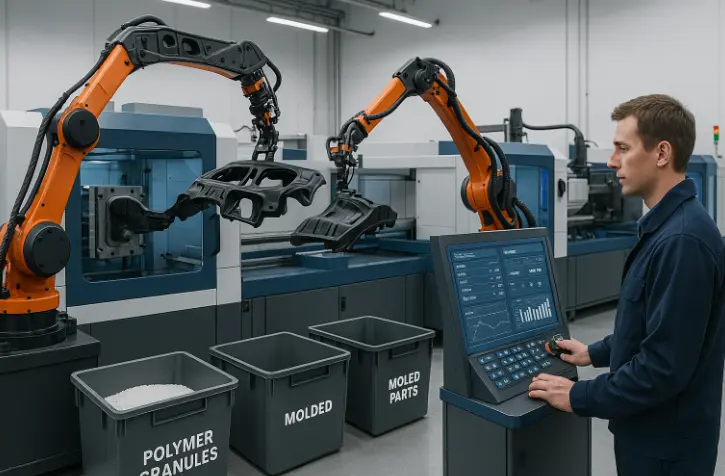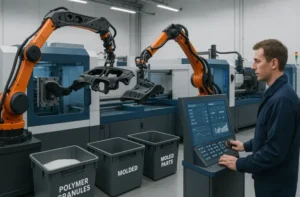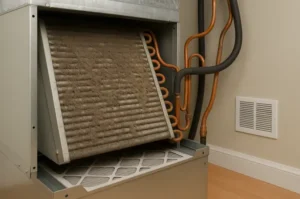In modern product design, where performance, comfort, and durability must coexist, overmolding has become a critical solution across industries. By combining multiple materials—typically a rigid plastic base with a soft elastomer overlayer—manufacturers can improve grip, seal, shock resistance, and aesthetics without increasing complexity or weight. Today, a growing number of sectors rely on this technique, working closely with experienced partners like a china mould factory or a trusted overmolding manufacturer to bring innovative designs to life at scale.
Let’s explore the industries where overmolding has made the most significant impact.
1. Medical Devices
In healthcare, overmolding serves both functional and hygienic purposes. Medical instruments, surgical tools, and handheld devices often feature overmolded grips to provide ergonomic support and reduce hand fatigue during long procedures. The soft-touch outer layer also reduces slippage, especially when gloves or moisture are involved.
Overmolding can also create sealed surfaces that are easier to sterilize and clean, helping to maintain strict hygiene standards. Common examples include dental tools, endoscope handles, blood pressure monitors, and patient monitors.
2. Automotive Industry
Automotive manufacturers increasingly use overmolding to reduce part count, improve driver comfort, and withstand harsh environments. The technique is ideal for parts that require dual material performance—like soft-touch HVAC knobs, overmolded seals and gaskets, steering wheel components, and wire harness connectors.
Because the automotive environment demands vibration resistance and temperature stability, overmolding allows designers to produce components that combine structural rigidity with flexibility or insulation where needed.
3. Consumer Electronics
From smartphones and headphones to wearable fitness trackers, overmolding is essential to both function and branding in consumer tech. Soft overmolded shells offer impact protection, improved user handling, and design flair. Many devices also rely on overmolded seals for water resistance—critical in smartwatches, earbuds, and rugged electronics.
The ability to encapsulate delicate circuits or batteries with protective elastomers makes overmolding a preferred technique for manufacturers striving to combine durability with modern aesthetics.
4. Power Tools and Industrial Equipment
Professionals who use power tools demand rugged, comfortable, and vibration-resistant equipment. Overmolding plays a key role in tool housings, grips, and buttons, reducing fatigue and improving control during prolonged use. The process also provides insulation for electrical tools, improving safety.
In industrial applications, overmolding helps protect internal components from dust, moisture, and mechanical shock—essential for field-use devices, control panels, and instrumentation.
5. Military and Tactical Gear
In military-grade equipment, overmolding is valued for its ability to enhance grip, resist environmental stress, and create durable, impact-resistant housings. Radios, communication gear, weapon grips, and night-vision devices often use overmolding to withstand extreme operating conditions.
Soft overmolded surfaces also reduce noise from contact or movement—an important tactical consideration. Additionally, color-coded or textured overmolded parts aid quick recognition and usability in high-stress environments.
6. Sports and Recreation
Products in the sports and outdoor industry—from bicycle components to fitness gear—benefit from the tactile and protective properties of overmolding. Items like grips, protective gear, eyewear, hydration equipment, and camping tools are often designed with overmolded zones for enhanced handling and visual appeal.
The ability to blend color, texture, and material function makes overmolding ideal for performance-focused designs that also need to look sleek and appealing.
A Cross-Industry Solution for Modern Manufacturing
No matter the industry, overmolding offers a reliable way to merge aesthetics, performance, and efficiency in one streamlined process. For companies seeking to reduce part count, improve ergonomics, or strengthen product durability, working with a qualified overmolding manufacturer is essential.
From startups to global OEMs, many organizations rely on the capabilities of a China mould factory to provide cost-effective, precision tooling that enables high-volume overmolding production. With continued advances in materials and mold design, the number of industries benefiting from overmolding is only expected to grow.
Also Read-Creative Solutions for Hassle-Free Junk Removal








